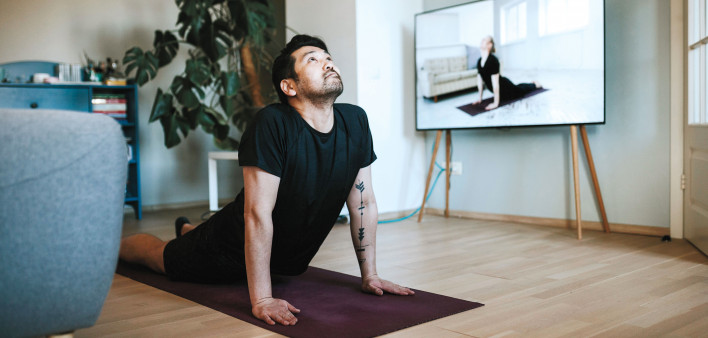For HIV-positive and HIV-negative people alike, physical activity is one of the keys to good health. You don’t need to go to a gym or buy special clothes or fancy equipment to exercise. Making the time to get some physical activity most days is an important part of a healthy lifestyle.
Exercise has many benefits, including greater bone and muscle strength, increased endurance, higher energy levels, easier sleep, better mental health and even improved sexual desire and function.
Along with eating a balanced diet, getting enough physical activity can help maintain a healthy weight, and it reduces the risk of comorbidities that occur at higher rates among people living with HIV, including cardiovascular disease, fatty liver disease, diabetes and cancer.
Generally speaking, there are two types of exercise. Aerobic exercise gets your heart pumping and your breathing rate up. Examples include walking, running, bicycling, swimming and dancing. Strength-training exercise tones and builds muscles. Examples include weight lifting, workouts with resistance bands and exercises such as push-ups, sit-ups and leg squats.
Experts recommend at least 150 minutes of moderate-intensity aerobic activity or 75 minutes of vigorous activity per week as well as strength training activities at least two days per week. It’s best to spread this activity over multiple days—for example, a half hour of moderate exercise five days a week—rather than doing it all at once.
The overall goal, according to the Centers for Disease Control and Prevention, is to move more and sit less throughout the day. People who do any amount of moderate to vigorous physical activity gain health benefits. If exercising is difficult due to physical limitations, even a small amount of activity is better than none.
Getting Started
It’s important to find types of exercise you enjoy and activities that fit into your daily life so you’re motivated to do them regularly. Vary your activities to prevent boredom. Take advantage of the weather and the seasons. Many people enjoy participating in team sports, while others prefer solo activities.
Yoga and tai chi—which promote strength, balance and flexibility—can be good options, especially for people who are older or have physical limitations.
While gyms may be closed and indoor activities may be restricted due to COVID-19, you can still do plenty of exercises at home or outdoors. For example, many exercise and yoga classes have gone virtual via Zoom.
A personal trainer or fitness coach can help design an exercise program that’s right for you.
Everyday activities such as walking the dog and gardening contribute to your total weekly physical activity. You can add more activity to your day by taking the stairs instead of the elevator or parking farther away from your destination and walking part of the way.
Before beginning a new exercise regimen, check in with your health care provider, especially if you are older or have underlying health conditions. If you’re just starting out, build up slowly—for example, bicycling several more minutes each day or lifting a bit more weight each time you work out. Stretch and warm up at the beginning of each exercise session.
Exercise is generally safe, but it’s important to know your limits. Pushing yourself too hard can lead to fatigue, muscle pain and increased risk of injury. Most people can find a type and level of activity that is safe and beneficial for them. Your body will tell you when you can step up the pace or need to slow down or take a break.







Comments
Comments